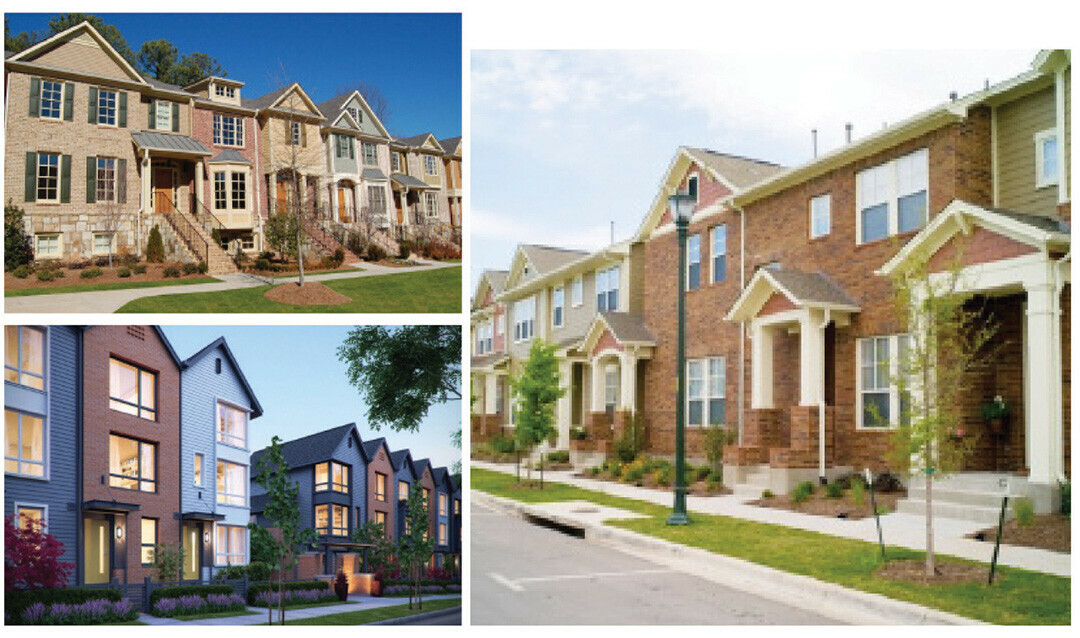Housing Study Encourages Action on Affordability
report offers a host of ideas to make Eau Claire-area housing less costly

Editor’s note: The first article about the findings of the Eau Claire Regional Housing study can be found here.
A recent report outlining challenges to the Eau Claire County housing market – notably a lack of available homes and a shortage of units affordable to lower-income residents – also featured a range of possible solutions. And while housing affordability may seem like an intractable problem, several of the suggestions – including creating a housing trust fund and changing zoning codes – are already being pursued.
Eau Claire City Council President Emily Berge said that housing affordability is among the top concerns she hears from constituents of all kinds. But while they may support affordable housing in the abstract, sometimes these same constituents are the first to express concern when a new apartment building or duplex is proposed in their neighborhood, she said.
And yet increasing housing density and capacity are key to making it more affordable – and according to the report, that includes changing zoning rules such as shrinking allowable lot sizes and reducing setbacks from the street.
“We’re trying these different things to see what works,” Berge said of these and other recommendations in the report. “It’s definitely a priority for the city.”
The 92-page Eau Claire Regional Housing Study was prepared by CZB, a planning and community development firm based in Maine, on behalf of the city and county of Eau Claire and the City of Altoona, and was released in early December. Its many recommendations include:
INTRODUCING NEW HOUSING TYPES. As newly built single-family homes on large lots become increasingly unaffordable, incentives and support should be offered for other types of new housing, such as row houses and quadplexes.
PROMOTING INFILL. Filling in vacant urban lots will help “pre-vitalize” neighborhoods and avoid negative environmental and fiscal problems that may come from building on the community’s periphery.
PREPARING FOR MORE SENIOR RENTERS. As the population ages, there will be greater demand among senior citizens for rentals, but many units don’t meet seniors’ needs or won’t be affordable to them.
LEVERAGING NATURALLY OCCURRING AFFORDABLE HOUSING. Some aging rental units in the county wouldn’t be affordable anymore if needed upgrades were made. The report calls for public subsidies to upgrade such properties while keeping them affordable.
CREATING ORGANIZATIONS TO ENCOURAGE AFFORDABILITY. The report recommends creating three new organizations: a regional housing trust fund, initially funded by local governments, to provide matching grants to keep housing affordable; a land bank, which would buy vacant, foreclosed, or abandoned properties; and a public-private redevelopment agency, which could fund housing upgrades.
“We’re trying these different things to see what works,” says City Council President Emily Berge. “It’s definitely a priority for the city.”
While funding for such initiatives may be a challenge given limits on municipal budgets, they aren’t necessarily out of reach. In fact, some of the recommendations are already on their way to being implemented, said Judi Moseley, a Realtor and chairperson of the city’s Housing Opportunities Commission. Among those is creating a community land trust, a nonprofit entity that recently received seed money from the city’s American Rescue Plan Act (ARPA) COVID relief funds.
Moseley said property held by such a land trust would be sold to homeowners or developers on the condition that housing built there would remain affordable forever. “The idea is you’re creating generational affordability,” she said noting that there are about 20 such trusts in Wisconsin, including in La Crosse. “A person or a family could purchase this property at a very affordable rate, and they know that when they sell it that there’s a formula to determine how much profit they can make,” Moseley said.
The city is also in the process to setting aside seed money from ARPA for a community redevelopment corporation, another nonprofit that would help keep existing housing affordable. For example, Moseley said, such an entity could provide grants to repair rental units so landlords wouldn’t have to boost the rent to pay for needed upgrades. Meanwhile, the city is in the midst of a full-scale revision of its zoning code, a process not undertaken in decades. This effort, which is expected to be finished by 2025, may include changes that encourage the kind of increased density the study calls for.
“A lot of work went into the report,” Moseley said, “and I think the recommendations are clearly things that we ought to be pursuing.”
Explore the Eau Claire Regional Housing Study for yourself online at tinyurl.com/ECHousingStudy.



















